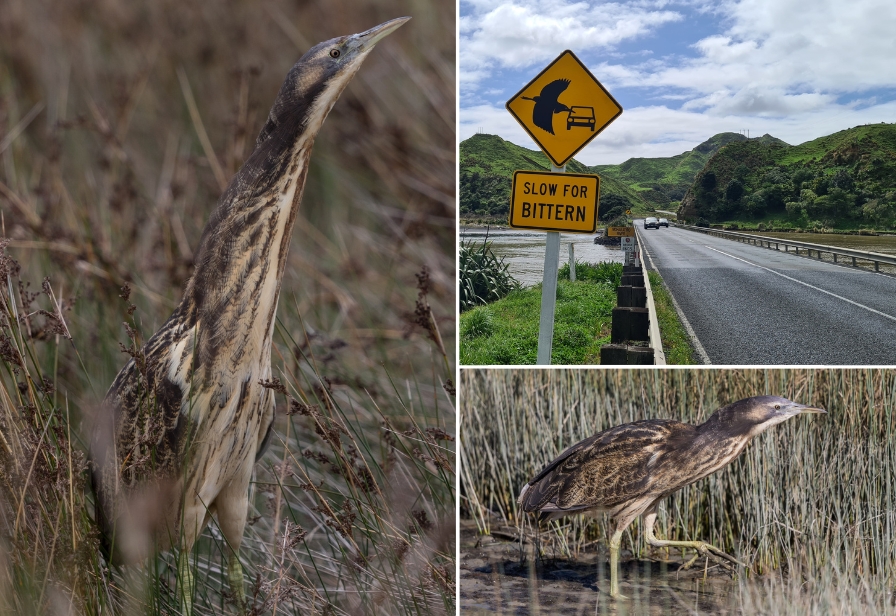Taranaki Regional Council wants the public’s help to ‘back the bittern’ and has launched a new interactive map to make it easier to report sightings of the elusive wetland bird.

Good places to spot matuku-hūrepo are wetlands around North Taranaki from New Plymouth to Mōkau/Awakino, Ōkato to Ōpunake and south of Hāwera, especially the Waverley and Waitōtara areas.
Following on from the Council’s support of the matuku-hūrepo/Australasian bittern for the Forest & Bird Bird of the Year, conservation efforts are continuing with the call for people around the region to record whenever they see the nationally threatened bird.
The webpage – haveyoursay.trc.govt.nz/bittern-sightings(external link) – features a map of Taranaki where people can drop a marker where they have seen a matuku-hūrepo, noting the time and place and uploading any photos they have.
Council Senior Ecologist Halema Jamieson says there are fewer than 1,000 matuku-hūrepo left in the whole country and maybe fewer than 30 in Taranaki so it’s essential data is gathered to support conservation efforts.
“The public’s help is absolutely vital as the matuku-hūrepo is counting on us for its survival. Knowing how many are left and where they are living is the first step to trying to improve their chances of survival,” says Ms Jamieson.
“The matuku-hūrepo is an absolutely beautiful bird and is truly an icon of healthy wetland habitats. We need to do as much as we can to ensure it does not go extinct. That would be a tragedy.”
The data gathered will be used by the lovebittern.com campaign too. The national project is running a ‘Great matuku-hūrepo muster’ where the public are asked to record wherever they see or hear the bird on 19 October and 16 November.
People can also help by watching out for matuku-hūrepo while driving. There are road signs installed either side of the Mohakatino bridge on SH3 near Mōkau urging drivers to slow down, following a recommendation by the Council to Waka Kotahi/NZTA after two bittern were tragically hit by cars in the area.
“We’ll be out and about over the next few months looking for bitterns and we’ll be adding our sightings to the map.
“It’s such an easy-to-use tool for recording where people have seen the matuku-hūrepo so please join us in backing the bittern and let us know when and where you’ve seen the birds,” Ms Jamieson says
Fast facts: The bittern
- Good places to spot matuku-hūrepo are wetlands around North Taranaki from New Plymouth to Mōkau/Awakino, Ōkato to Ōpunake and south of Hāwera, especially in the Waverley/Waitōtara area.
- The bird’s conservation status is ‘nationally critical’
- Matuku-hūrepo can be 74cm in length
- Males weigh up to 1400g, females 900g
- The bird is part of the heron family
- The main threat to matuku-hūrepo is the loss of habitat – wetlands
- Matuku-hūrepo feed mainly on fish but also eat spiders, insects, frogs, lizards, molluscs and worms
- To hear the call, see photos and more info, see: https://bit.ly/3XIwjX0(external link)